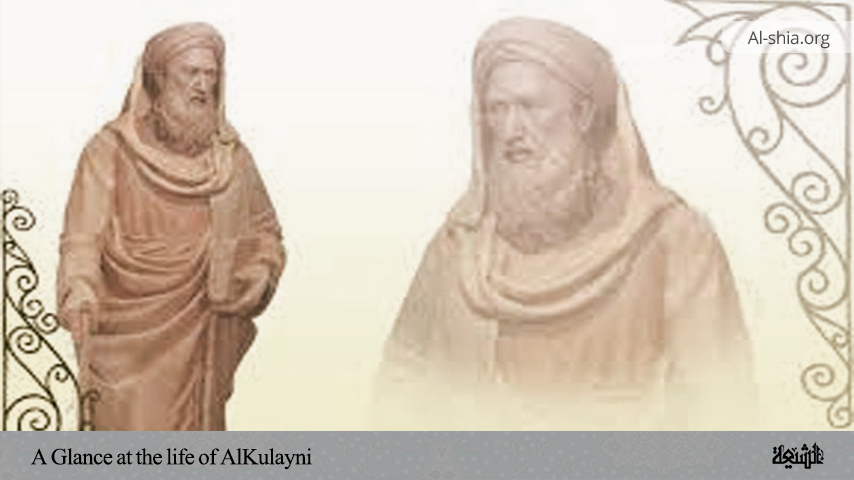The 18th of Dhu ‘l-Hijjah is celebrated in the Shi’a world as the Feast of Ghadir Khumm in which Prophet Muhammad (S.A.W.) said about Imam ‘Ali (PBUH): “Whomsoever master (mawla) I am, this ‘Ali is also his master.” This event is of such significance to the Shi’as that no serious scholar of Islam can ignore it. The purpose of this paper is to study how the Orientalists handled the event of Ghadir Khumm. By “orientalists”, I mean the Western scholarship of Islam and also those Easterners who received their entire Islamic training under such scholars. (1)
Before proceeding further, a brief narration of the event of Ghadir Khumm would not be out of place. This will be especially helpful to those who are not familiar with the event. While returning from his last pilgrimage, the Prophet received the following command of Allah: “O the Messenger! Convey what had been revealed to you from your Lord; if you do not do so, then [it would be as if] you have not conveyed His message [at all]. Allah will protect you from the people.”(2)
Therefore he stopped at Ghadir Khumm on the 18th of Dhu ‘l-Hijjah, 10 AH to convey the message to the pilgrims before they dispersed. At one point, he asked his followers whether he, Muhammad, had more authority (awla) over the believers than they had over themselves; the crowd cried out, “Yes, it is so, O Apostle of Allah.” Then he took ‘Ali by the hand and declared: “Whomsoever master (mawla) I am, this ‘Ali is also his master – man kuntu mawlah fa hadha ‘Aliyun mawla.” Then the Prophet also announced his impending death and charged the believers to remain attached to the Qur’an and to his Ahlul Bayt.
This summarizes the important parts of the event of Ghadir Khumm. The main body of this paper is divided as follows: Part II is a brief survey of the approach used by the Orientalists in studying Shi’ism. Part III deals with the approach used to study Ghadir Khumm in particular. Part IV is a critical review of what M.A. Shaban has written about the event in his Islamic History AD 600-750. This will be followed by a conclusion.
Study of Shi’ism by the Orientalists
When the Egyptian writer, Muhammad Qutb, named his book Islam the Misunderstood Religion, he was politely expressing the Muslim sentiment about the way Orientalists have treated Islam and Muslims in general. The word “misunderstood” implies that at least a genuine attempt was made to understand Islam.
However, a more blunt criticism of Orientalism, shared by the majority of Muslims, comes from Edward Said, “The hardest thing to get most academic experts on Islam to admit is that what they say and do as scholars are set in a profoundly and in some ways an offensively political context. Everything about the study of Islam in the contemporary West is saturated with political importance, but hardly any writers on Islam, whether expert or general, admit the fact in what they say.
Objectivity is assumed to inhere in learned discourse about other societies, despite the long history of political, moral, and religious concern felt in all societies, Western or Islamic, about the alien, the strange and the different. In Europe, for example, the Orientalist has traditionally been affiliated directly with colonial offices.” (3)
Instead of assuming that objectivity is here in learned discourse, Western scholarship has to realize that recommitment to a political or religious tradition, on a conscious or subconscious level, can lead to biased judgment. As Marshall Hudgson writes, “Bias comes especially in the questions he poses and in the type of category he uses, where indeed, bias is especially hard to track down because it is hard to suspect the very terms one uses, which seem so innocently neutral…” (4) The Muslim reaction to the image portrayed of them by Western scholarship is beginning to get its due attention.
In 1979, the highly respected scholar trained in Western academia, Albert Hourani, said, “The voices of those from the Middle East and North Africa telling us that they do not recognize themselves in the image we have formed of them are too numerous and insistent to be explained in terms of academic rivalry or national pride.”(5) This was about Islam and Muslims vis-à-vis the Orientalists.
When we focus on the study of Shi’ism by the Orientalists, the word “misunderstood” is not strong enough; rather it is an understatement. Not only is Shi’ism misunderstood, but it has also been ignored, misrepresented and studied mostly through the heresiographic literature of their opponents. It seems as if the Shi’ites had no scholars and literature of their own. To borrow an expression from Marx, “They cannot represent themselves, they must be represented” and that also by their adversaries!
The reason for this state of affairs lies in the paths through which Western scholars entered the field of Islamic studies. Hodgson, in his excellent review of Western scholarship, writes, “First, there were those who studied the Ottoman Empire, which played so major a role in modern Europe. They came to it usually in the first instance from the viewpoint of European diplomatic history. Such scholars tended to see the whole of Islamdom from the political perspective of Istanbul, the Ottoman capital.
Second, there were those, normally British, who entered Islamic studies in India so as to master Persian as good civil servants, or at least they were inspired by Indian interests. For them, the imperial transition of Delhi tended to be the culmination of Islamic history.
Third, there were the Semitists, often interested primarily in Hebrew studies, who were lured into Arabic. For them, headquarters tended to be Cairo, the most vital of Arabic-using cities in the nineteenth century, though some turned to Syria or the Maghrib. They were commonly philologists rather than historians, and they learned to see Islamic culture through the eyes of the late Egyptian and Syrian Sunni writers most in vogue in Cairo. Other paths-that of the Spaniards and some Frenchmen who focused on the Muslims in Medieval Spain that of the Russians who focused on the northern Muslims-were generally less important.”(6)
It is quite obvious that none of these paths would have led Western scholars to the centres of Shi’a learning or literature. The majority of what they studied about Shi’ism was channelled through non-Shi’i sources. Hudgson, who deserves our highest praise for noticing this point, says, “All paths were at one in paying relatively little attention to the central areas of the Fertile Crescent and Iran, with their tendency towards Shi’ism; areas that tended to be most remote from western penetration.”(7) And after the First World War, “the Cairene path to Islamic studies became the Islamicist’s path par excellence, while other paths to Islamic studies came to be looked on as of more local relevance.” (8)
Therefore, whenever an Orientalist studied Shi’ism through Ottoman, Cairene or Indian paths, it was quite natural for him to be biased against Shi’a Islam. “The Muslim historians of doctrine [who are mostly Sunni] always tried to show that all other schools of thought other than their own were not only false but, if possible, less than truly Muslim. Their work described innumerable ‘firqahs’ in terms which readily misled modern scholars into supposing they were referring to so many ‘heretical sects’.”(9)
And so we see that until very recently, Western scholars easily described Sunni’ism as ‘orthodox Islam’ and Shi’ism as a ‘heretical sect’. After categorizing Shi’ism as a heretical sect of Islam, it became “innocently neutral” for Western scholars to absorb the Sunni scepticism concerning the early Shi’a literature. Even the concept of taqiyyah (dissimulation when one’s life is in danger) was blown out of proportion and it was assumed that every statement of a Shi’a scholar had a hidden meaning. And, consequently, whenever an Orientalist studied Shi’ism, his recommitment to the Judeo-Christian tradition of the West was compounded by the Sunni bias against Shi’ism. One of the best examples of this compounded bias is found in the way the event of Ghadir Khumm was studied by the Orientalists, an issue that forms the main purpose of this paper.
Continue in the next article: ( Ghadir Khumm and the Orientalists 2 )
Notes:
___________________________________________________
1. This is a revised and expanded version of a paper first published simultaneously in the bi-monthly The Light (June 1990) magazine and in Ghadir (Toronto: ISIJ & NASIMCO, July 1990) under the title of “Orientalists & the Event of Ghadir Khumm”.
2. The Qur’an 5:67
3. Said, E.W., Covering Islam (New York: Pantheon Books, 1981) p. xvii.
4. Hodgson, M.G.S., The Venture of Islam, vol. 1 (Chicago: University of Chicago Press, 1974) p. 27.
5. Hourani, A. “Islamic History, Middle Eastern History, Modern History,” in Kerr, M.H. (Ed) Islamic Studies: A Tradition and Its Problems (California: Undena Publications, 1979) p. 10.
6. Hodgson, op. cit., p. 39-40.
7. Ibid.
8. Ibid.
9. Hodgson, op. cit., p. 66-67.






